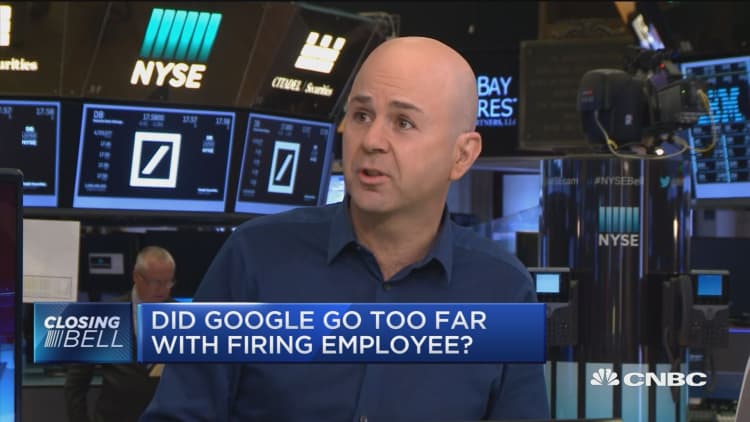Google's diversity program discourages debate on the topic of bias and encourages employees who participate in anti-bias training to keep details of the sessions secret, according to slides for leaders and participants of one such session used by the company.
At least two of the slides back up some of the claims by fired engineer James Damore, who after attending such a session wrote a memo calling Google "an ideological echo chamber where some ideas are too sacred to be honestly discussed."
The memo led to his firing and has ignited a nationwide firestorm over what he wrote and how Google management has responded.
Many slides from the diversity training decks use real-world examples to explain how conversations can be unintentionally biased. One slide, for instance, suggests that an employee who tells another, "The interface needs to be so simple your mother can use it," is guilty of "stereotype bias."
Other slides, however, may explain why Damore thought Google "has created a politically correct monoculture that maintains its hold by shaming dissenters into silence."
For instance, in a slide titled "Off-topic for this session," the first point underneath that heading reads: "Debating whether bias exists at your organization."
That suggests any argument that Google is not biased is unwelcome at the diversity sessions, which are voluntary.
Another slide titled, "Create a safe learning space," includes this instruction: "Don't repeat what people said in this room."
The presentations are called "Google's Bias Busting @ Work Facilitator Guide," which is available online here and "Bias Busting @ Work Slides," seen here.
A Google spokesperson said, "Far from being secretive, these are documents we've intentionally made publicly available to the world for years, for discussion and feedback. And the context of these bias-busting sessions is important: to make these sessions productive, we ask participants to focus on their own experiences with bias, and not to disclose others' personal experiences. That's a common sense way of running an effective workshop. There are numerous other forums where employees are able to discuss our programs."
Damore's memo sparked widespread criticism for including stereotypes that women are inherently more cooperative and less interested in status, and implying that they are less suited for coding jobs because of these traits, among other things. Critics have suggested that Damore's assertions lacked scientific backing and were selectively chosen to bolster a conclusion he'd already reached, among other criticisms.
The controversy has come as Google, a unit of Alphabet, faces a U.S. government lawsuit that accuses the company of paying women far less than men in similar roles. In January, the U.S. Department of Labor sued Google to obtain employee data as part of an inquiry into alleged salary discrimination by gender.
Google has refuted the allegation and says it has a gender blind approach to compensation.
Two months ago, Google hired Danielle Mastrangel Brown as vice president of diversity and inclusion and chief people officer, a position she previously held at Intel.
On a web page describing its diversity efforts, Google says it is seeking talent "where we haven't looked before."



